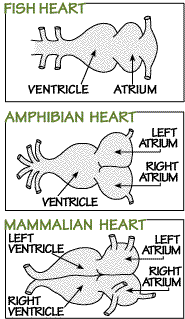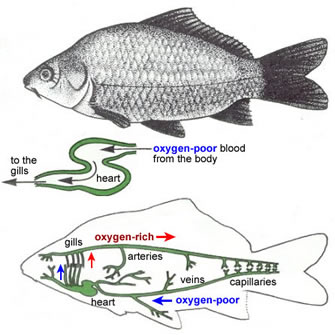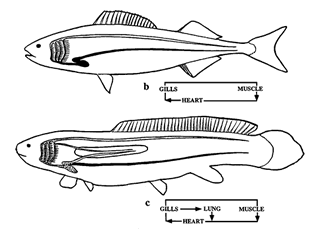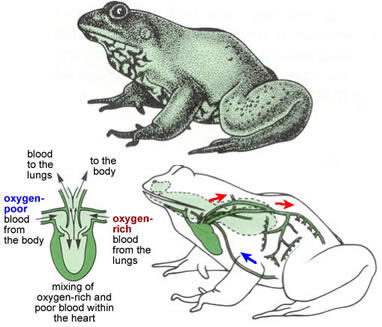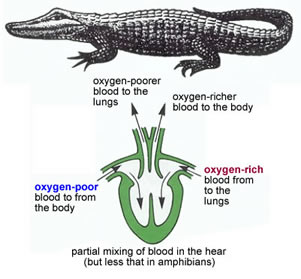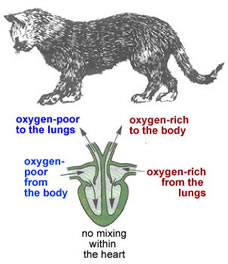In some of the smallest aquatic organisms, this exchange of gases (O2 in, CO2 out) occurs directly through the skin.
As organisms because larger however, specialized structures were required to deliver O2 and remove CO2 throughout the body.
This specialized system is known as the circulatory system: it consists of blood, which contains cells that carry oxygen and CO2, blood vessels (the tubes through which the blood flow), the heart (which pumps the blood through the blood vessels) and gas exchange organs, such as gills and lungs.
Although it is common to think of fish has having only gills, many also have lungs or an air bladder (both of which arise in a similar manner developmentally from the upper intestine).
